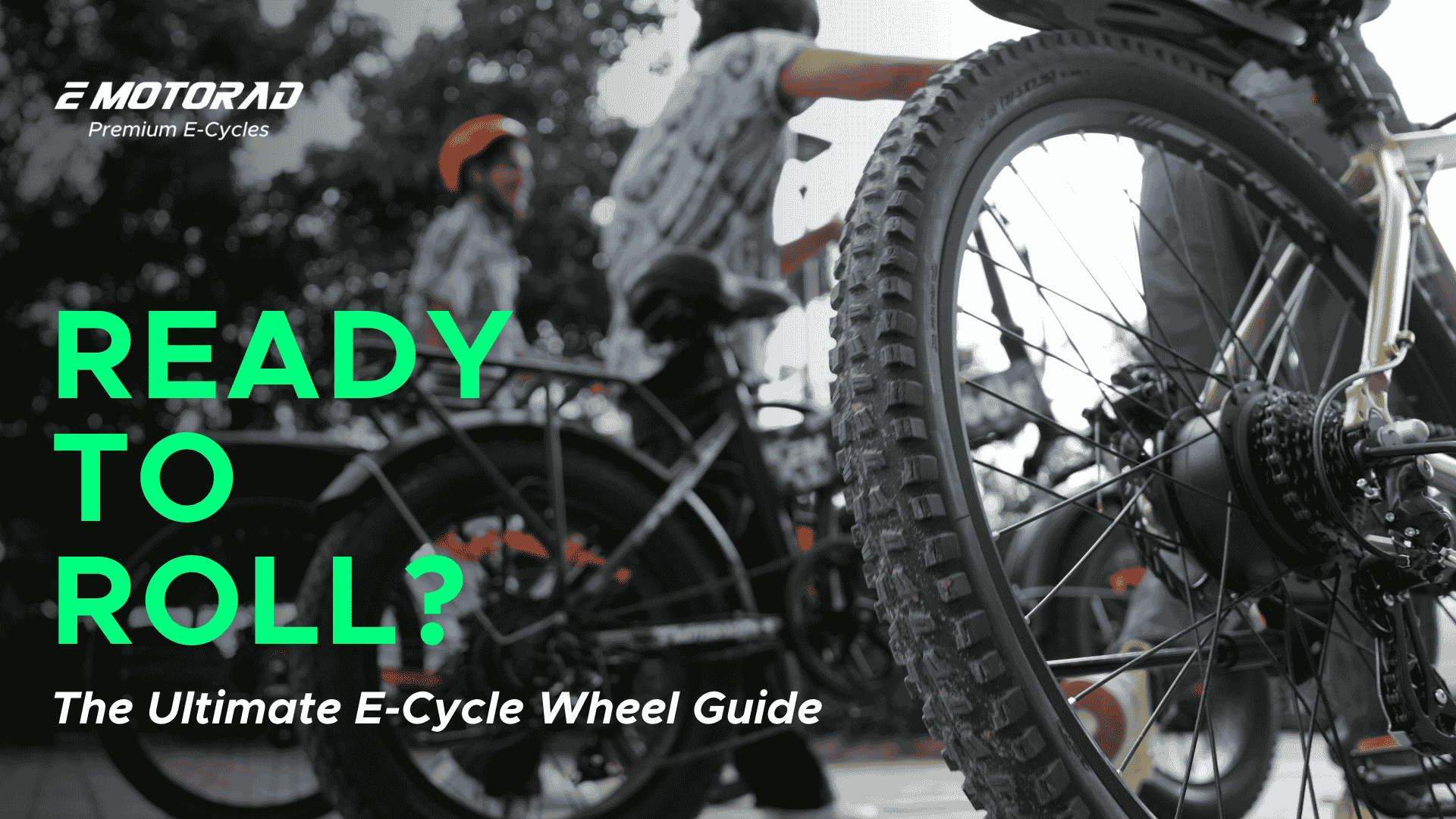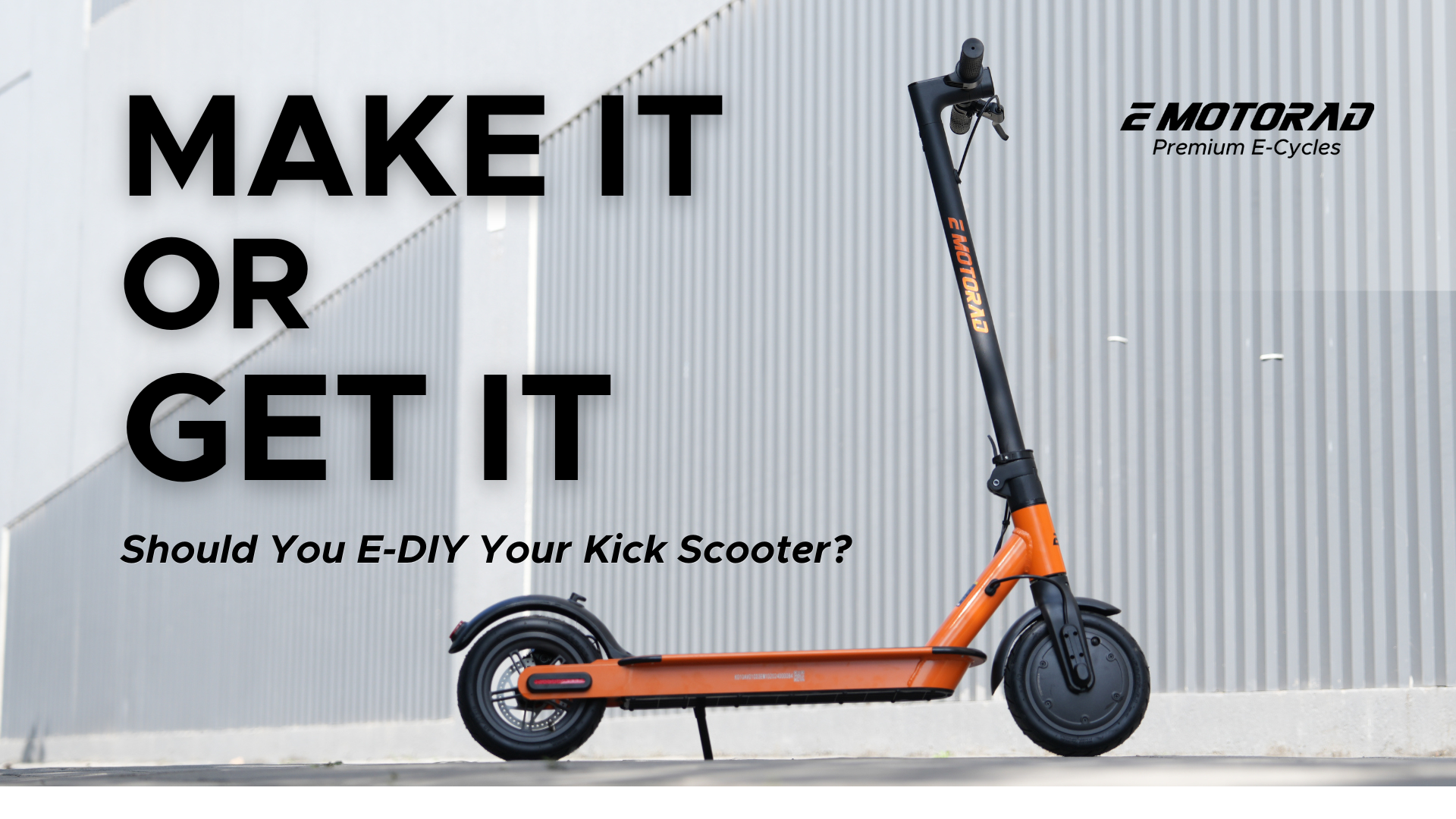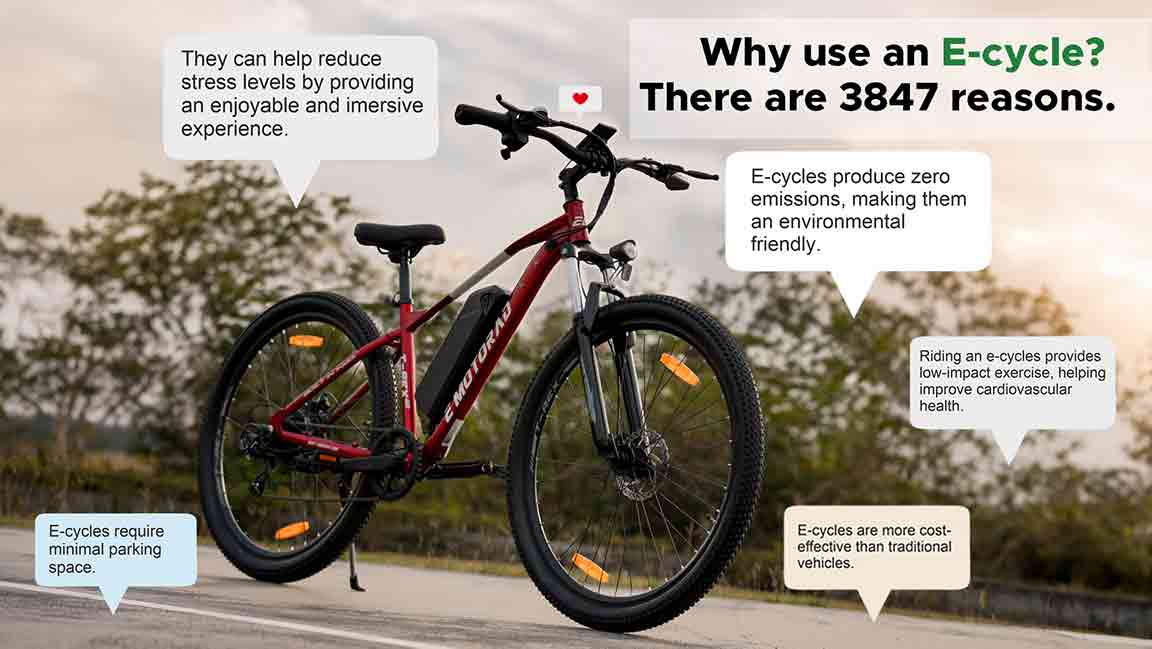Imagine you are halfway up a very steep slope. The journey is long and tiring, and suddenly, you are not able to pedal any longer, and neither can you let go.
With your legs burning and your breath hitching, you wonder, with regret, why you even started the ride in the first place.
Suddenly, you shift gears, and the scene transforms like magic.
The climb becomes manageable, and you start enjoying the steep challenge.
Or, maybe you are zipping on a flat road, pedalling almost effortlessly, and you feel like a Tour de France champ at that moment.
Wonder how that happens with just a click?
This is where it all comes from - the gear ratios of the bicycles.
How Does Bicycle Gears Ratio Work?
What are they?
Gear ratio is the comparison between the number of teeth on your chainring (the front sprocket) and your rear cassette (the set of sprockets on your back wheel).
It is basically the factor that determines how hard or easy it is to pedal your e-bike. The idea is to find the perfect balance between the two - the Goldilocks zone.
Here's a brilliant formula to help you find that perfect balance -
Gear ratio = Chainring Teeth / Rear Sprocket Teeth
Say, for example, you’ve got a 50-tooth chainring and a 25-tooth sprocket, your gear ratio is 2. This means for every full pedal rotation, your back wheel rotates twice.
It seems quite straightforward, doesn't it?
But this process holds so much more than just that. Let’s dive in further!
High Gear vs. Low Gear: The Yin and Yang of Cycling
A piece of advice for every cyclist - whether beginners or pros - it would be in their best interest to know how to use low and high gears.
Here is the rundown:
High Gear: Ideal for speeding along flat areas and zooming down hills. Your gear ratio will increase with a larger chainring and a smaller rear sprocket, meaning that you’ll travel more distance with each pedal stroke. It's like slipping on the cycle’s version of "beast mode."
Low Gear: Your saviour for riding uphill or through difficult terrains. Use this when climbing. Low gear uses a smaller chainring and a larger rear sprocket, making a lower gear ratio that flows easily even with less force pushing through the pedals. Think of this as the perfect equivalent of a comfortable couch… minus the snacks.
Switching elegantly between these two gears is where the magic happens. This is what will revolutionise your cycling experience forever.
Why Should You Care About Gear Ratios?
Gear ratios are not just for bike nerds (though we adore confident cyclists).
They're like a secret weapon for anyone who wants a chillier and more efficient ride.
Here's why:
Efficiency: The right gear ratio lets you use your energy wisely, whether you're sprinting or climbing
Comfort: Avoid leg burnout by matching your effort to the terrain
Speed: Knowing when to shift gears can shave minutes off your ride time
Versatility: From a traditional to an electric cycle, understanding gear ratios always makes the difference
E-cycles like the sleek models offered by EMotorad are about electric assist that combines with smart gear systems.
You would get the best of both worlds: less effort and more fun, like traditional cycling…but upgraded.
How to Choose the Perfect Gear Ratio for Your Style
Your ideal gear ratio depends on three key factors:
Your Terrain: Flat roads favour high gears, while hilly or rough trails demand lower ones
Your Strength: Stronger riders can handle higher gear ratios, while beginners or casual riders might prefer lower ones for ease
Your Bike: Road bikes, mountain bikes, and hybrids often have different gearing setups
For example:
Road Bikes: Typically have higher gear ratios for speed on flat surfaces
Mountain Bikes: Have lower gear ratios to deal with steep inclines and rough trails
E-Bikes: Much like EMotorad offerings, e-cycles often come with intuitive systems that automatically change gearing to optimise electric assist
Pro Tip: Try your bike's gears in different terrains to understand what works best for you. After all, cycling is a personal journey.
Common Gear Ratio Setups
Here’s a quick cheat sheet for some popular gear ratio configurations:
2:1 Ratio (50/25): A balanced setup for moderate inclines and flat terrains
1:1 Ratio (30/30): Ideal for steep climbs where every ounce of effort counts
4:1 Ratio (52/13): Perfect for flat, fast rides—or if you’re racing your friends
A noteworthy aspect is that many modern bikes offer a single chainring and wide-range cassette to simplify shifting without sacrificing versatility.
Brands such as EMotorad integrate this aspect quite well into the design.
Mastering the Art of Gear Shifting
You are practically a gear ratio guru now. It's time to talk about shifting.
A smooth gear transition can make or break your ride.
Here are some quick tips:
Expect your terrain: Downshift before hitting that hill, not halfway up
Don't cross-chain: Try to avoid really extreme combinations of the largest chainring with the largest sprocket. That puts a huge amount of tension on your chain and wears components out faster than you'd ever want.
Get comfortable with it: Practice during easier rides until you build that muscle memory
Some e-cycles have high tech that often optimises shifting for you, making it almost foolproof.
It’s like having a cycling coach built into your bike.
If you wish to know more about how the derailleurs work in your e-cycle, check out this blog: The Function of Derailleurs in Traditional Bicycles and E-Cycles
Fun Gear Ratio Trivia to Impress Your Cycling Buddies
Wonder what’s the highest recorded gear ratio on a bike? Some track bikes use an insane 4.5:1 ratio for maximum speed.
Early bicycles didn't have gears at all. Riders had to physically dismount and flip the wheel to change speeds—talk about commitment!
Modern cycling pros analyse gear ratios meticulously to gain even a fraction of a second in races. That’s some serious science!
Wrapping It Up: Why Bicycle Gear Ratios Matter
Whether you are a weekend warrior, a daily commuter, or an e-cycle enthusiast with a desire to explore new trails, all these can be interlaced with bicycle gear ratios - an aspect not well-understood yet by casual cycling folks.
Gear ratios balance everything—speed, effort, and efficiency—making every pedal stroke count.
And if you are on the hunt for technology-driven and performance-packed e-cycles, EMotorad would make the top on the list.
The gear switches are so intuitive that you won’t need to spare any thoughts besides enjoying the ride to its fullest.








About Us
Blogs
News
EM Stories